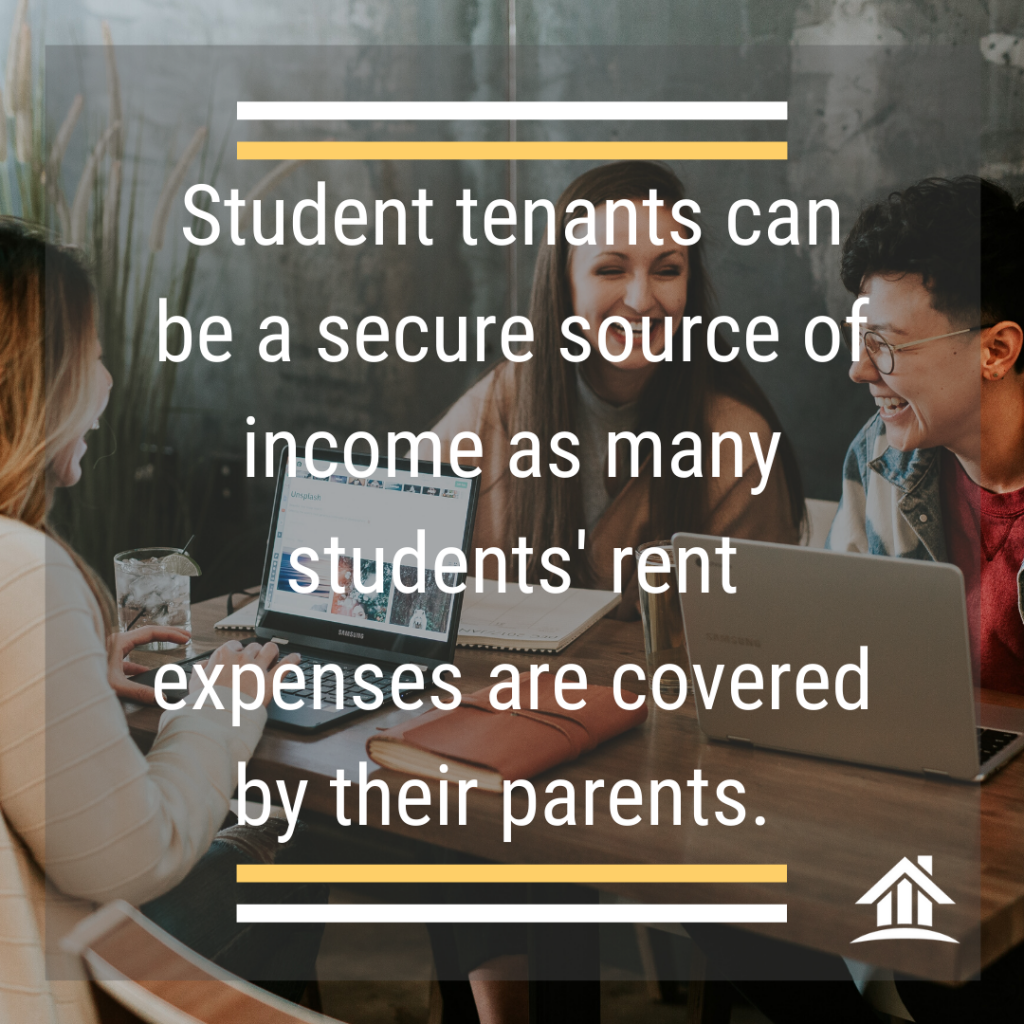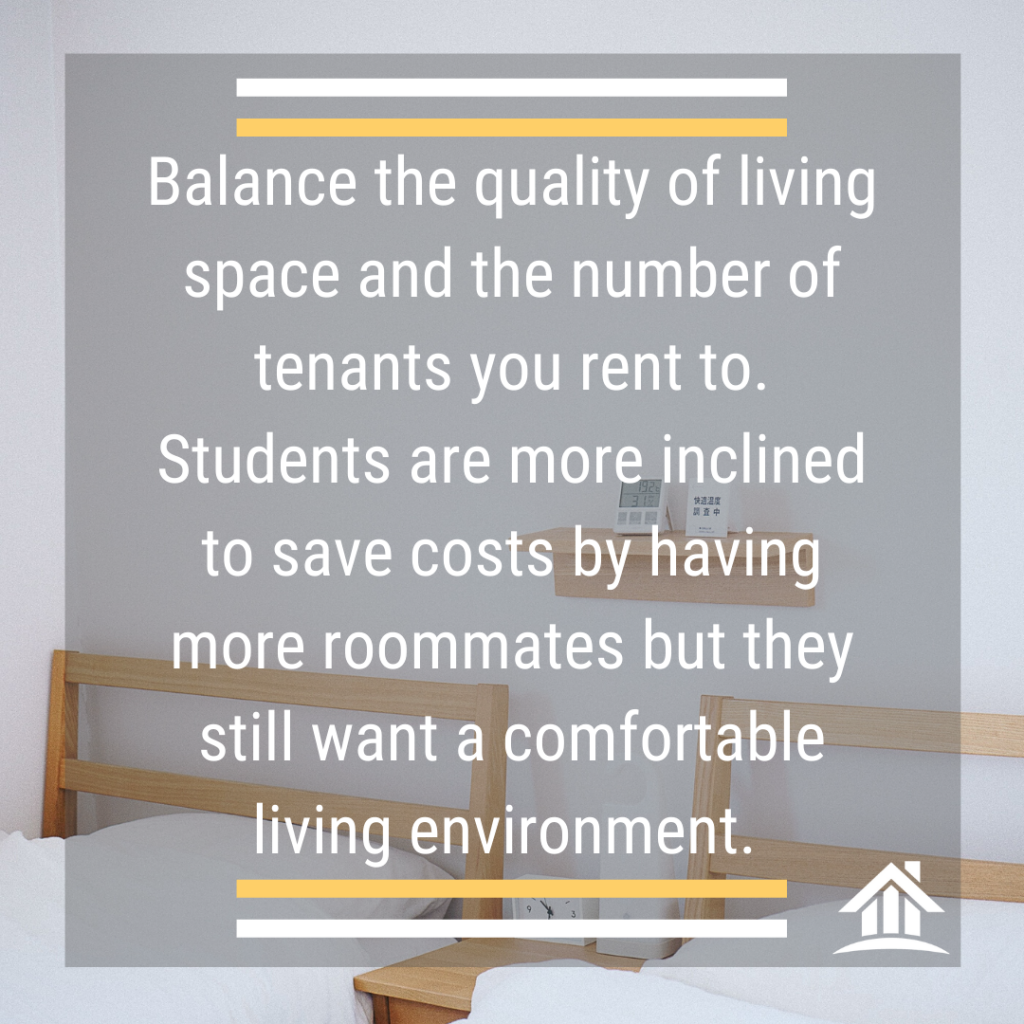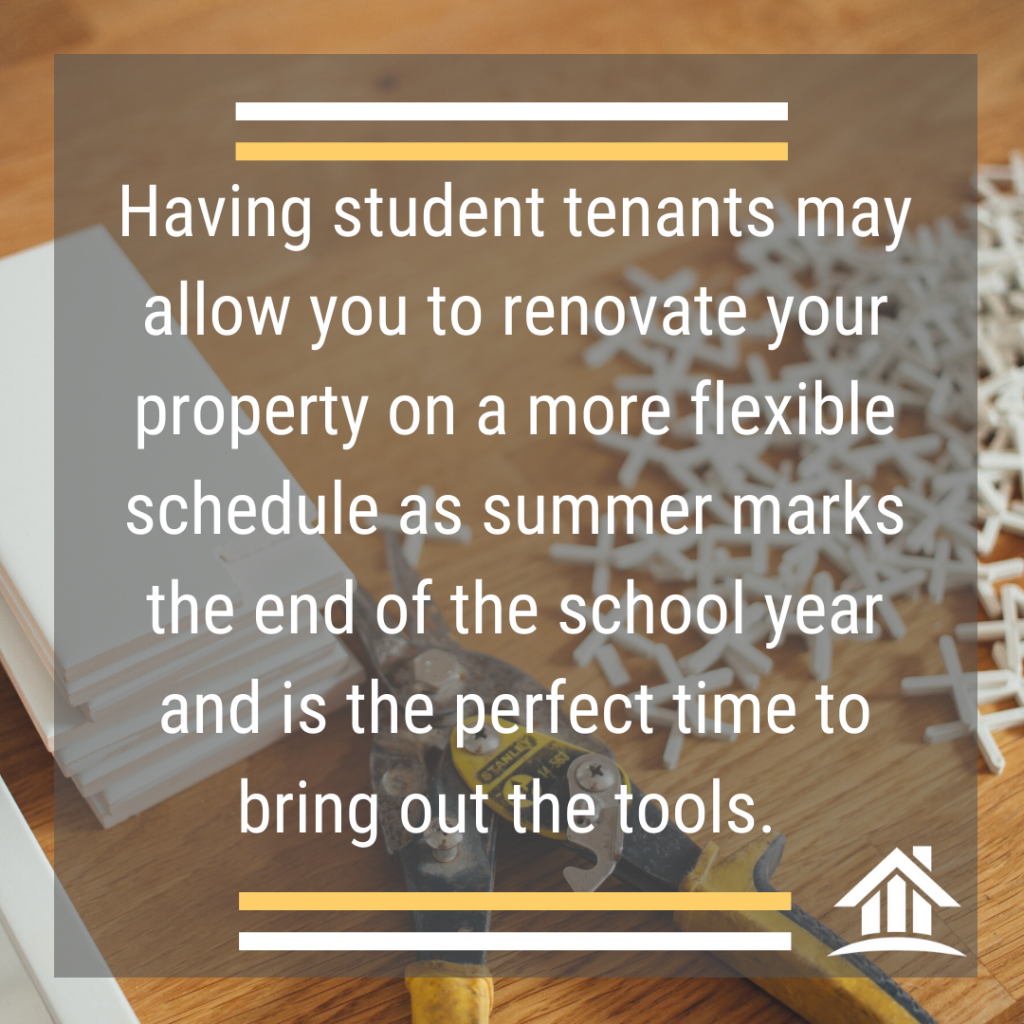In 2018, the Canada Pension Plan Investment Board (CPPIB) acquired a student housing portfolio worth $1.1 billion. This portfolio consisted of 13,666 beds across 20 American university campuses. To Canadians, this revealed that one of the country’s largest investment boards thought student housing was a good bet.
If you’re a real estate investor or just have a child heading off to university, buying a property in a “university town”, where prices are often lower than major cities like Toronto or Vancouver, can be enticing. While the average price of a home in Toronto is roughly $920,000, an average home in London, Ontario (home to Western University) is almost 1/3rd of that at $344,815.
In this blog post, we explain the benefits and downfalls of investing in student housing. This post clarifies some myths of the opportunity, and explains what to keep in mind when investing in a property targeted at student tenants.
The benefits of student housing investments
Student tenants. You’re effectively renting to someone with no credit history, plenty of debt, and no full-time income. Or are you? Although this profile is common for students, it’s also common that the student’s parents pay most or all of their rent and expenses. And with a parental guarantee that rent will be paid, this tenant turns into a secure source of income, even less risky than someone who may have a full-time job. This is why a risk-averse investor such as the Canadian Pension Plan is willing to invest in it.

A property close to a university may also mean guaranteed tenants. One article found that only 3% of Canadian students lived in university-provided housing, with the remaining 97% commonly living with parents or at nearby rental units.
There’s no shortage of university students. In recent years, international students have enrolled in Canadian universities at an increasing rate. Other countries that were once popular for international students such as the U.S. and the U.K. have had unfavourable attitudes towards immigrants in recent years, which has resulted in more interest in Canada. This is why among new Canadian non-permanent residents, international students were the largest contributor. The best part is that each of these students needs a place to live. Thus the growing number of international students has made student housing more popular with real estate investors.
As mentioned prior, student housing often has a lower barrier to entry than a condo investment in downtown Toronto. Although cities such as Waterloo, Ontario, or London, Ontario, are seeing real estate values appreciate, they’re still much more reasonable than what you would find in Toronto.
The pitfalls of investing in student housing
Student housing isn’t all rainbows and sunshine. Although it’s a secure investment for the most part, some aspects of it can make it particularly tough. Students may not care about the property as much as a tenant who is older and more mature. University house parties run rampant as part of the school culture, dirty dishes are usually left in the sink for weeks, and there’s often plenty of alcohol and drunk students around. This could result in damage to the house or other issues like mould or vermin.
And if you’ve purchased a property that’s in a different city that’s an hour or more away, common tenant issues are even more difficult. Toilets and drains get clogged, heating systems might break, or a window can crack. These all require your immediate attention. To prevent a 2-hour drive in the evening to fix a clogged toilet, it’s a good idea to keep some local plumbers or repair people in mind. Better yet, you could simply pay a property management company to take care of everything for you (but you remember that this would eat into your cash flow).
What to keep in mind when you purchase a property targeted at student tenants

Students are a different but similar ball game to regular tenants. You often hear investors mention the number of “beds” they own, which refers to how many tenants they can accommodate. To maximize your returns on a student housing investment, you want to maximize the number of students living there (within reason). This doesn’t mean covering every square inch with a bunk bed. However, a 3-bedroom house could be made into a 5-bedroom by adding two rooms to the basement.
Students may be cheap, but they still desire good living accommodations. In fact, student rentals are more often going towards the luxury-end now. Well-off international students who can afford to study abroad want high-end living accommodations, and as more of these international students choose Canada as their next educational venture, this demand increases. It’s all about finding a balance between maximizing tenants while having a luxurious living space.
If you plan to renovate a property before listing it for tenants, there are a few items to keep in mind so that the space is suitable for students. This includes using quality, but not particularly high-end, installations like sinks or toilets. Most of the cost for renovations comes from the cost of labour, so why cheap out on a few hundred dollars on a sink that lasts longer? Materials such as laminate or vinyl tiled flooring are also solid and cost effective.
Do your renovations during the summertime when students aren’t around. You can even stagger them year to year. If you have a renovation that requires clearing the whole house, you could list your property for an 8-month lease instead of 12. Although you’re losing out on 4 months of rent, you can charge more during those 8 months, since 8-month leases are typically more desired by students.

Students are
great tenants to have. Although they lack credit scores or full-time incomes,
it’s usually their parents paying the monthly rent. The increasing number of
international students also means that there’s no shortage of students looking
for housing accommodations. Although partying and managing a property in a
different city may be difficult, it can be worth the stability. Make sure to
find a balance between creating a great living space for students while also
maximizing how many tenants you can have in a house.


